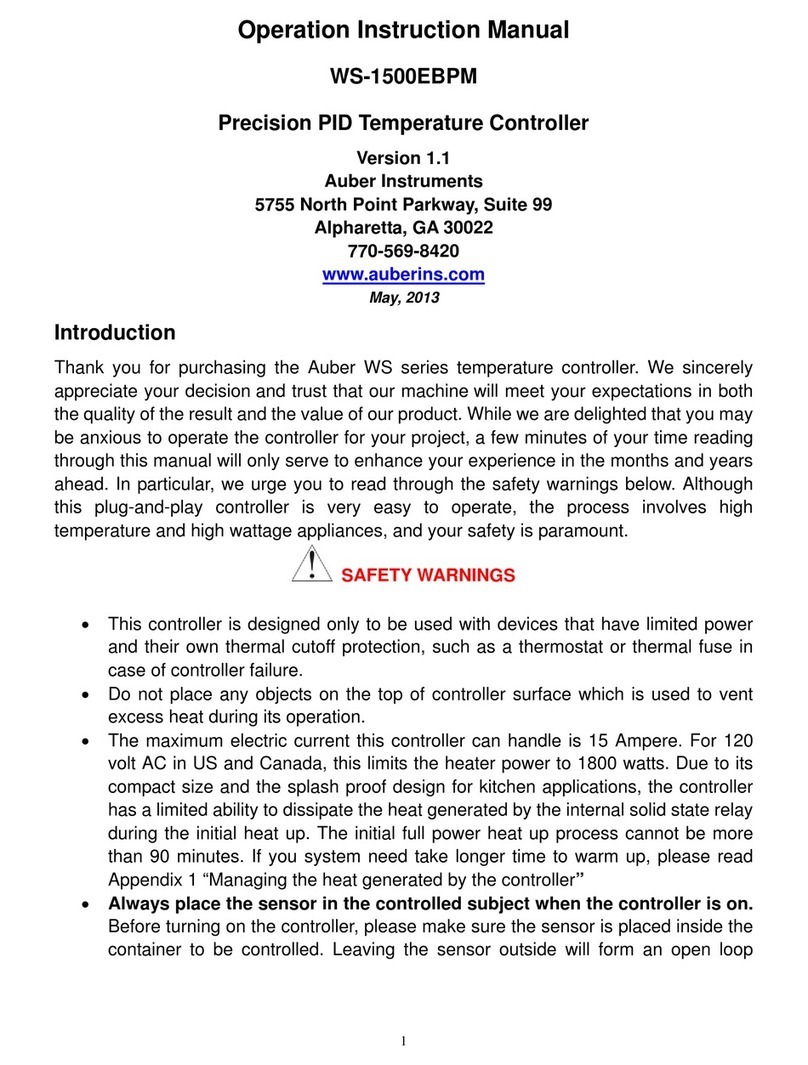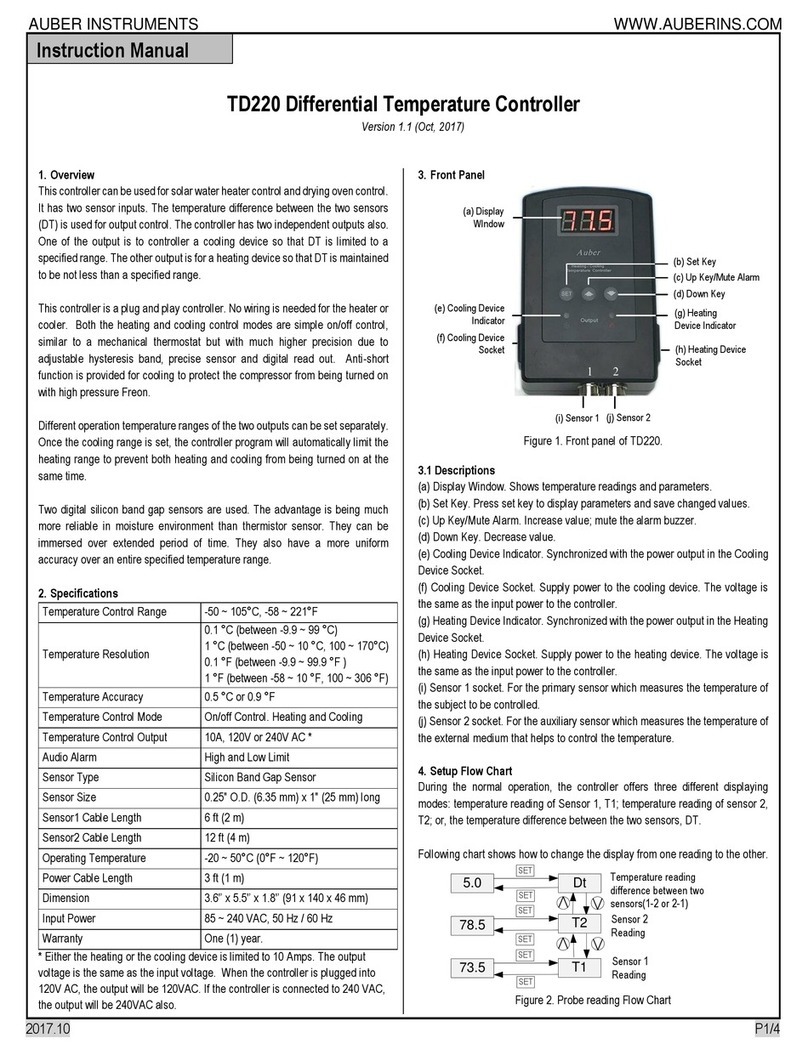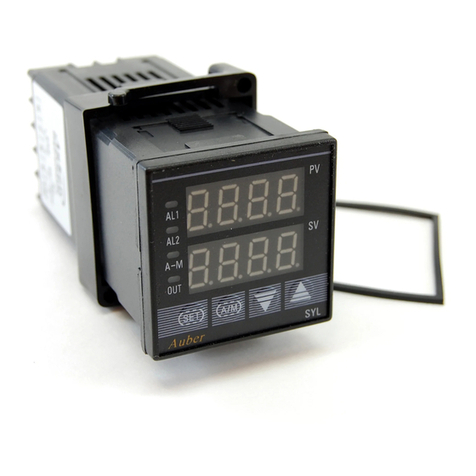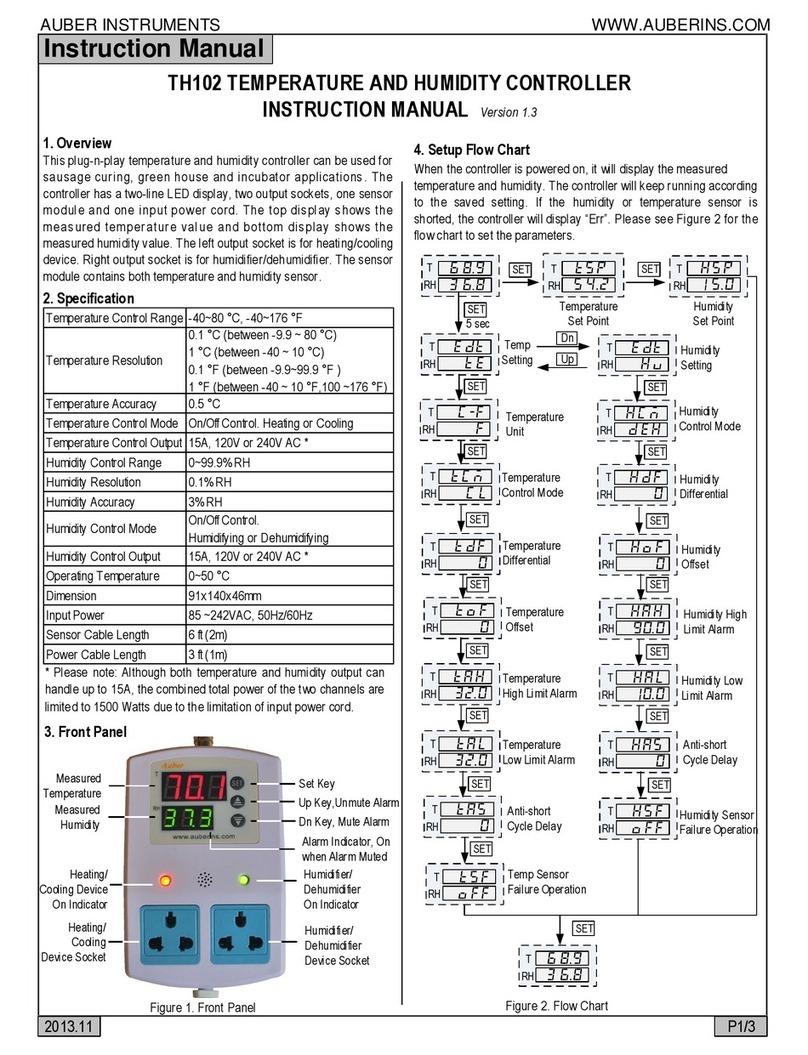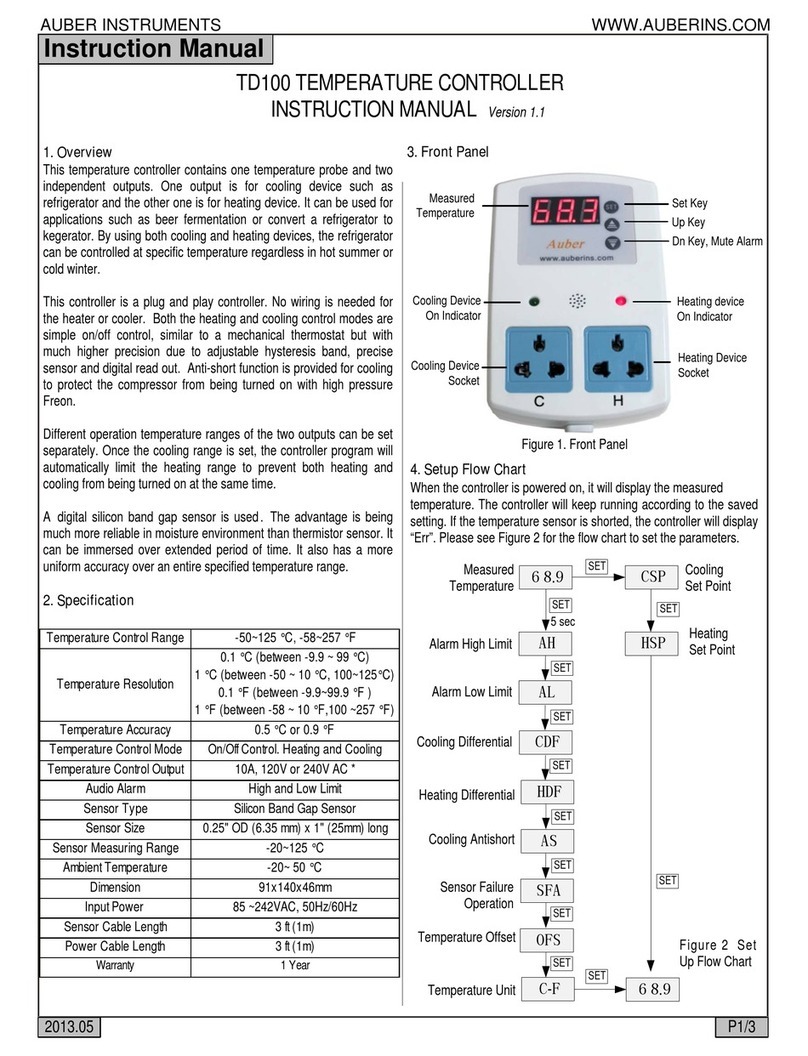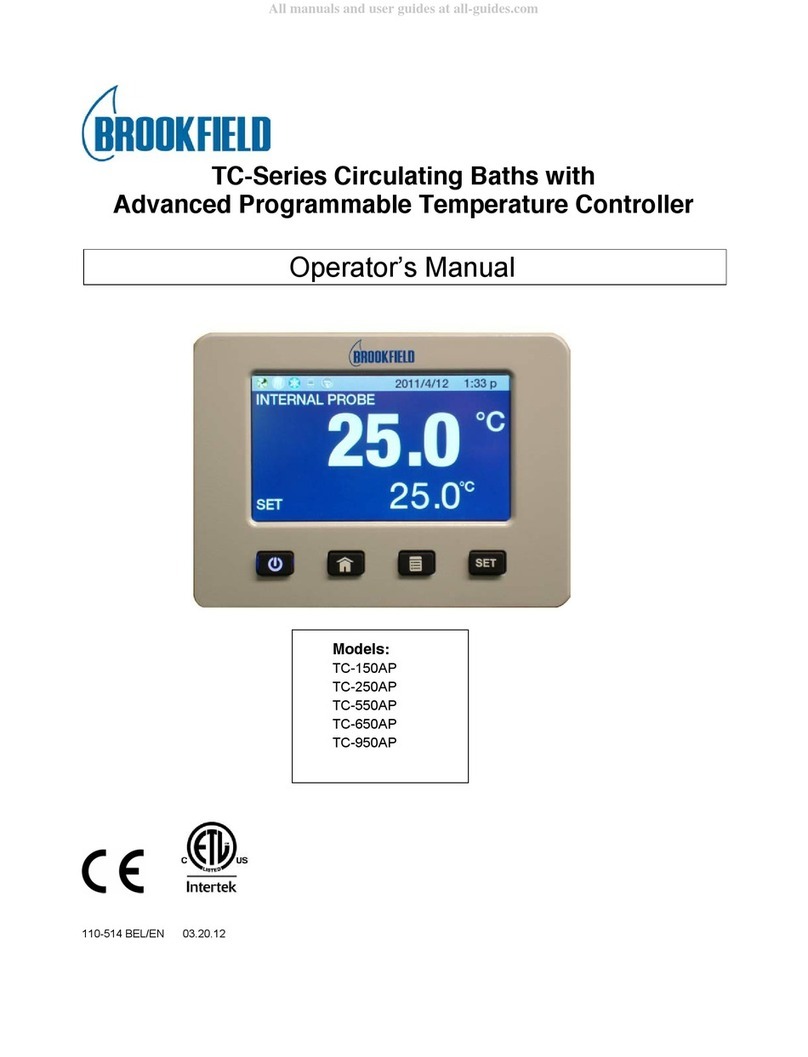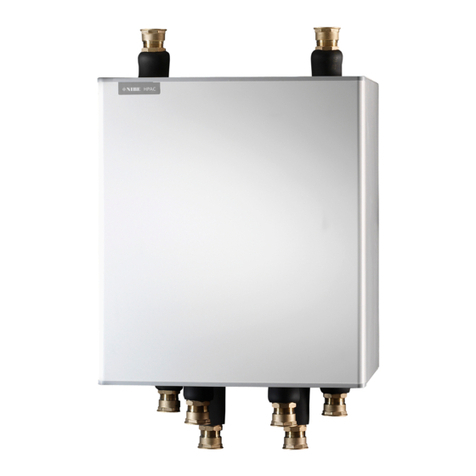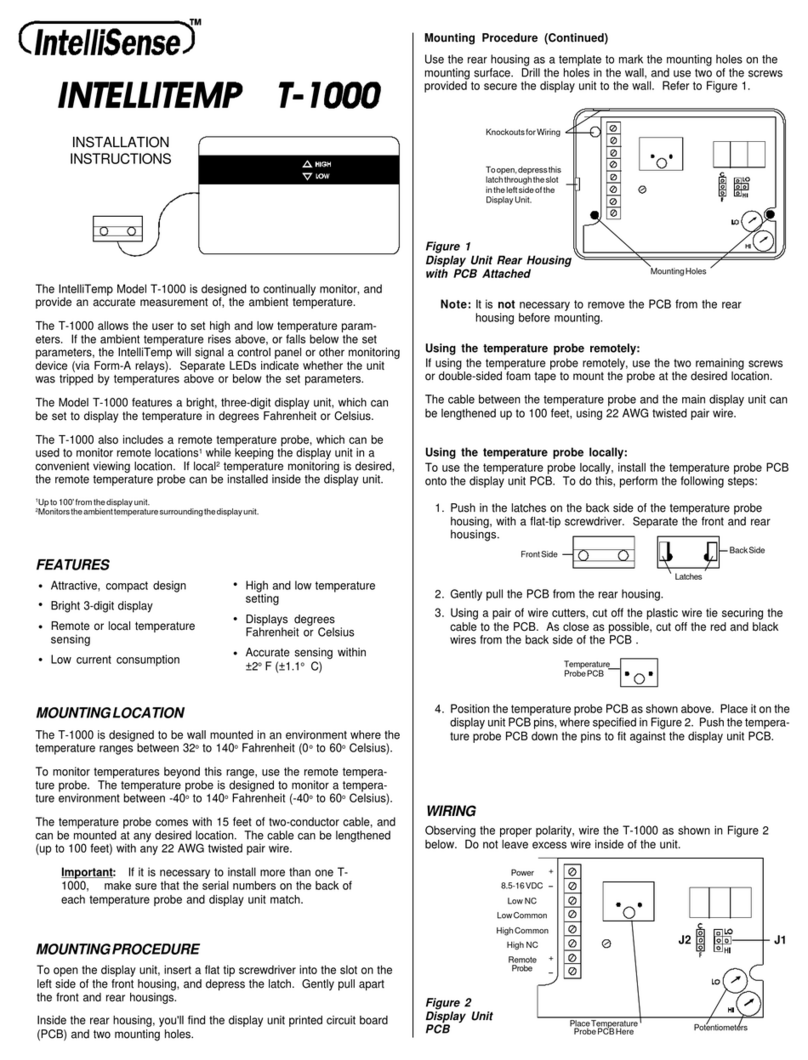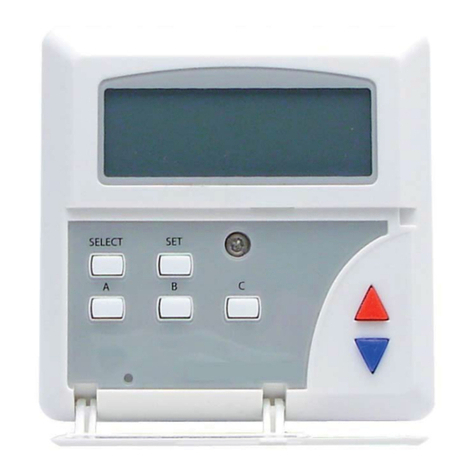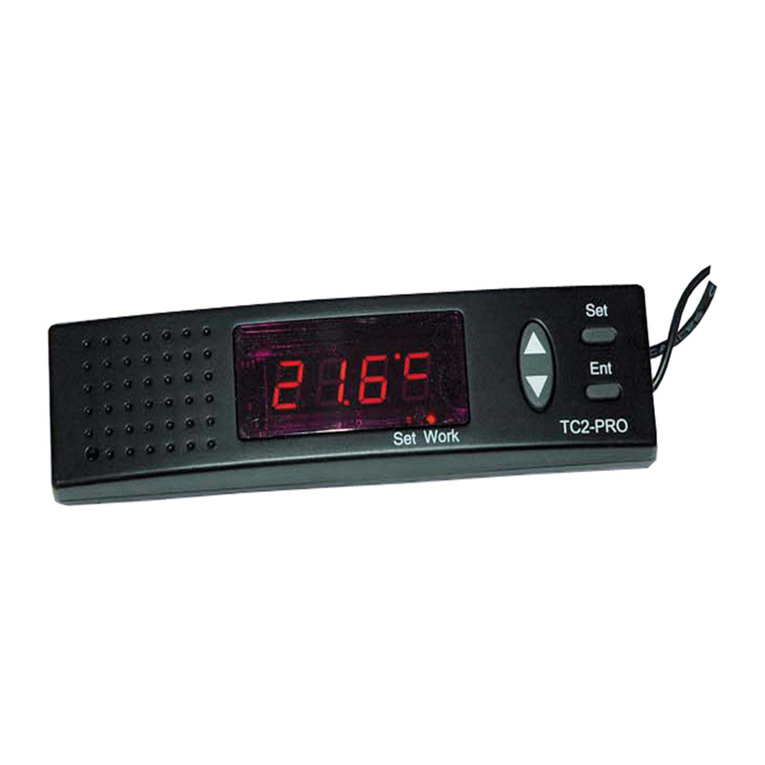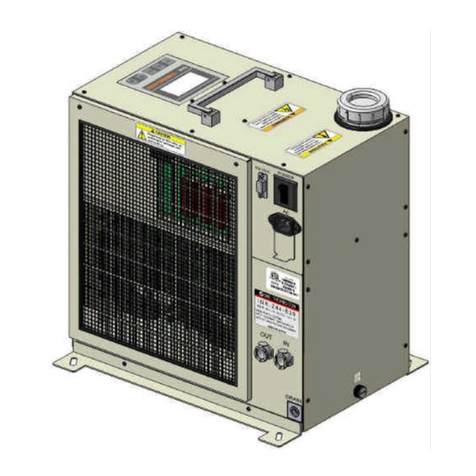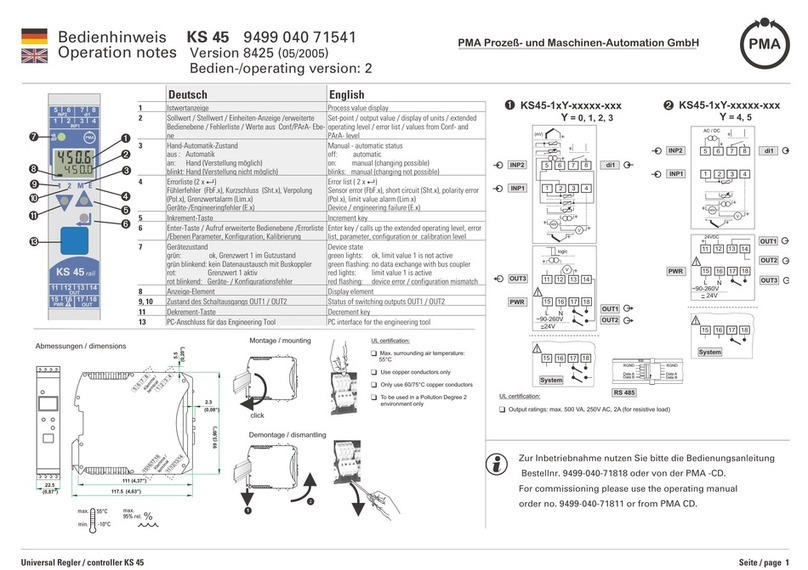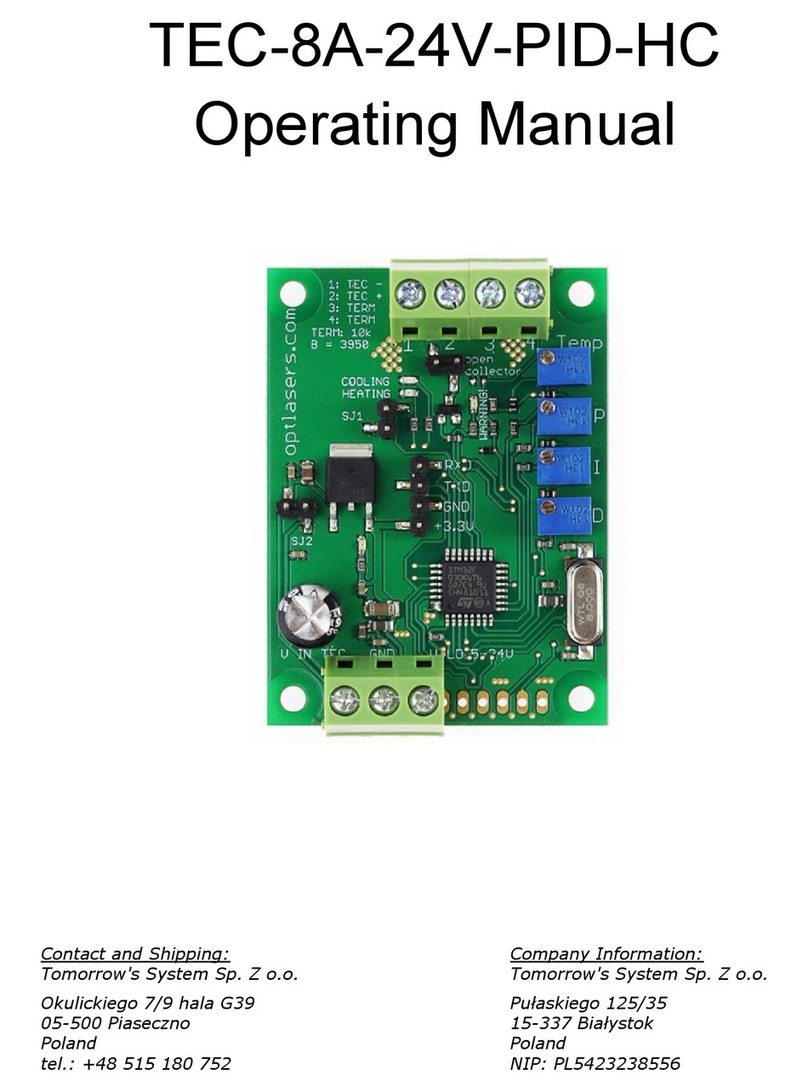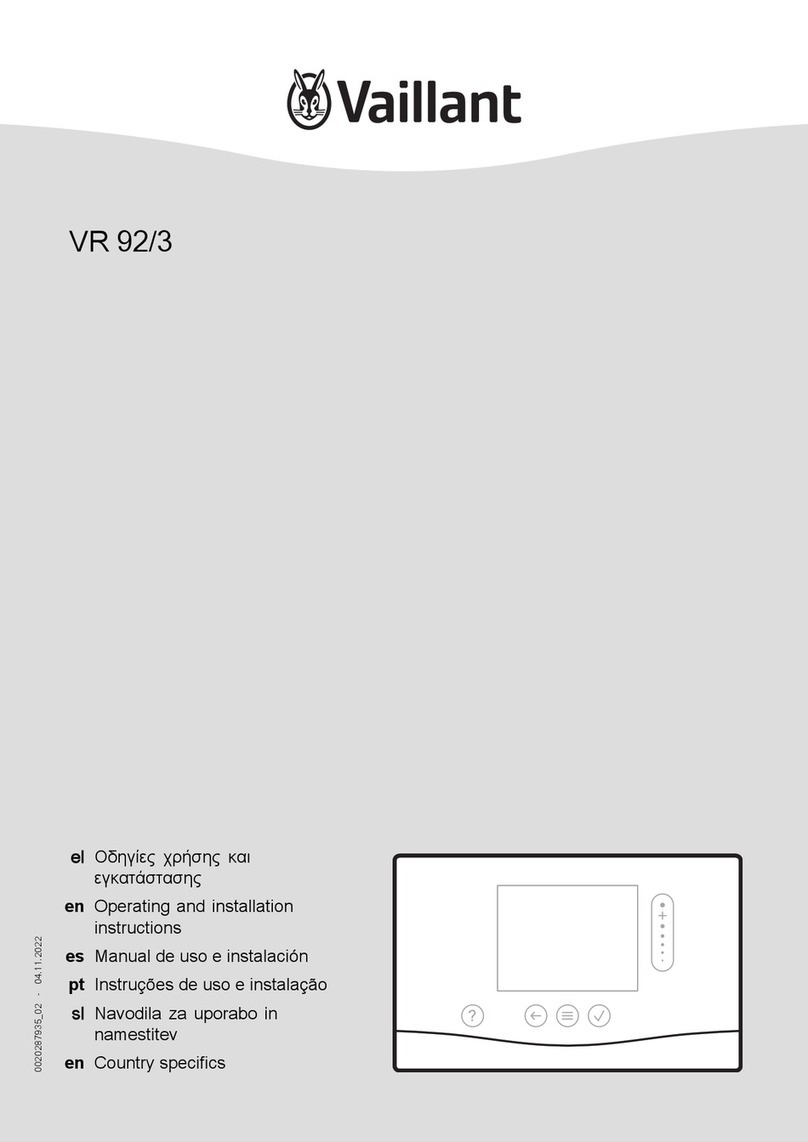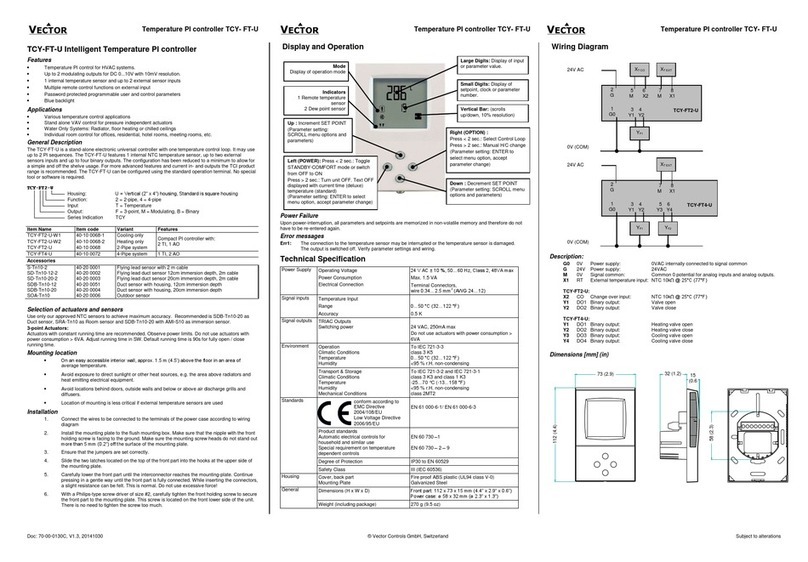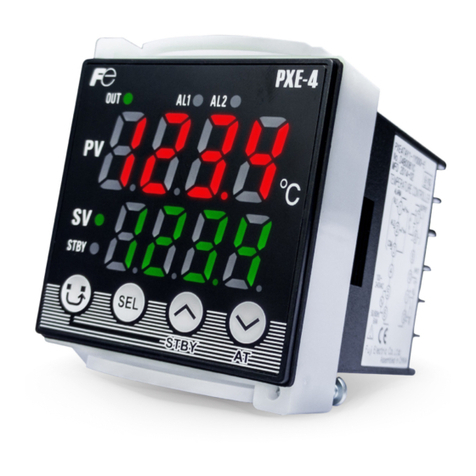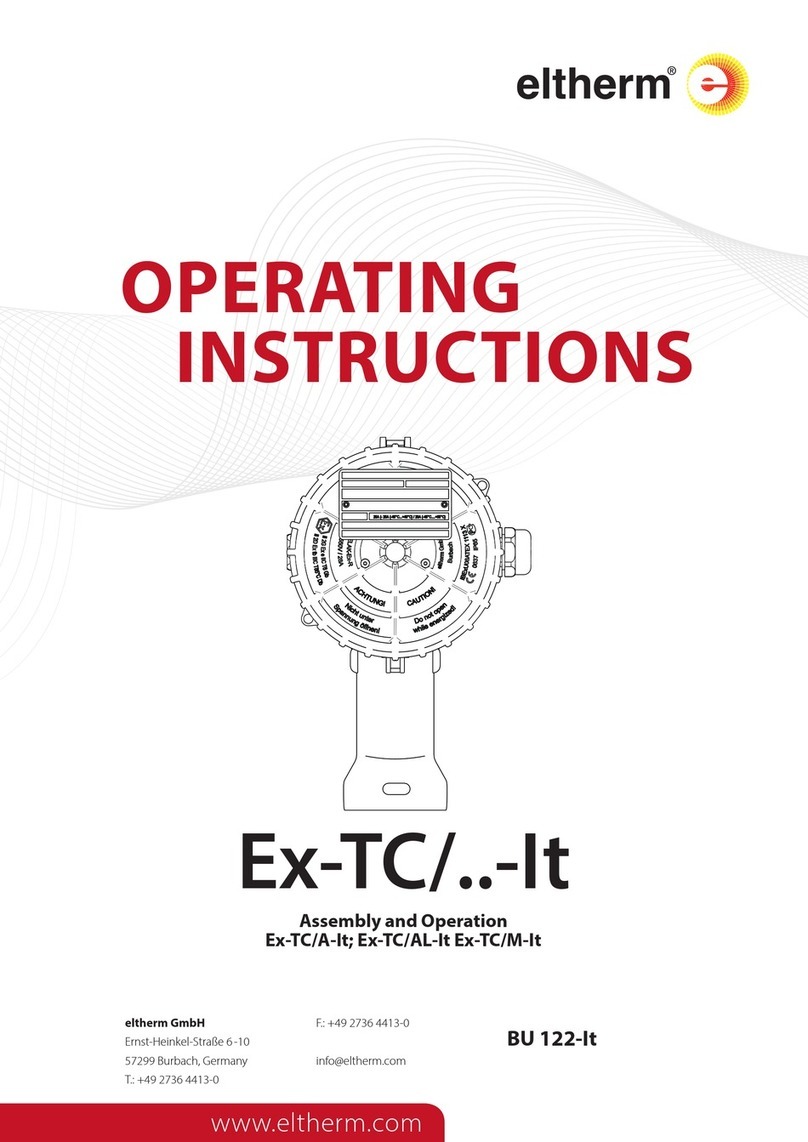
AUBER INSTRUMENTS WWW.AUBERINS.COM
2013.05 P2/3
Note 3. Proportional Constant (P): When P increases, the system is more stable.
When P decreases, the system is less stable. If the P is too small, the system would
be oscillatory or even non-convergent.
Note 4. Integral time (I): Brings the system up to the set value by adding a constant to
the output that is proportional to how far the process value (PV) is from the set value
(SV) and how long it has been there. When I decreases, the response speed is faster
but the system is less stable. When I increases, the respond speed is slower, but the
system is more stable. When I is 0, then it turns to be PD control.
Note 5. Derivative time (d): Responds to the rate of PV change, so that the controller
can compensate in advance before |SV-PV| gets too big. A larger number increases
it’s action. Setting d-value too small or too large would decrease system stability,
cause oscillation or even non-convergence.
5.2 PID parameter setting (accessed by code 0036)
The values of P, I and D parameters are critical for good response time, accuracy and
stability of the system. The values of the PID parameters have been optimized for
charcoal grill application. User should not change it unless the result is not satisfactory.
In that case, you can use the Auto-Tune function to automatically determine these
parameters. If auto-tuning result is not satisfactory, you can manually fine-tune the PID
constants for improved performance.
Setting PID parameters is similar to the setting of the Temperature and Alarm
Parameter as shown in the flow chart of Figure 3. The difference is that these
parameters are accessed by enter code 0036 instead of 0001.
Table 2. PID and relevant parameters
Symbol Setting Range Initial Note
P Proportional Constant
I Integral Time
d Derivative Time
SouF
Cycle Rate
ot
Digital Filter Strength
FILt
Exit
End
p
i
d
souf
ot
filt
end
Description
Damp Constant
0.1~99.9(%)
2~1999(Sec)
0~399(Sec)
0.1~1.0
2~199(Sec)
0~3
1.2
300
70
0.7
15
0
SouF too low SouF acceptable SouF too high
Note 3
Note 4
Note 5
Note 6
Note 7
Note 8
Note 7. Cycle rate (ot): It is the time period that the controller uses to calculate its
output. The initial value is set to 15 seconds for charcoal smoker control. Short time
causes the fan to pulse at higher frequency. Longer time may reduce the quality of
control
Note 8. Digital Filter (Filt): can be set as 0, 1, 2, 3. Filt=0, filter diabled; Filt=3, strongest
filtering effect. Stronger filtering increases the stability of readout display, but causes
more delay in the response to changes in temperature.
Buzzer on Buzzer on
PV PV
Figure 4. Absolute high alarm Figure 5. Absolute low alarm
Note 6. Damp constant (SouF): The parameter is controlled by the artificial
intelligence of the controller. This constant helps the PID control quality. When its
value is too high, the system will be over damped. When its value its too low, the
system may overshoot.
5.3 System Configuration Parameters (accessed by code 0089)
Table 3. System configuration parameter setting
PSb 0
rd 0
CorF 0: °C 1:°F
End
Code Setting Range Initial Note
Inty K
outy 2
inty
Atdu
Hy 3
Description
outy
hy
atdu
psb
rd
corf
end
Input Sensor Type
Control Output Mode
Hysteresis Band
Autotune Offset
Input Offset
Control Function
Display Unit
Exit
See Appendix
0, 1, 2, 3, 4, 5, 6
0~9999
0~200
-1000~1000
0: heating 1: Cooling
10
1
Note 9
Note 10
Note 11
Note 13
Note 14
Figure 6. Damp constant
Figure 7. The system setup flow chart
Note 9. The value of outy determines the control mode: When it is set to,
2: PID control mode.
3: On/off control mode.
6: Limit control mode.
Setting value for 0, 1, 4, 5 should not be used for this controller.
The new outy setting will not take effect if the outy is changed until the controller is
restarted .
Note 10. Hy is only used when controller is in on/off or limit control mode. It sets the
hysteresis band for the controller.
Note 11. The auto-tune offset will shift the SV value down by the Atdu value during the
auto tune process. It will prevent the system from damage due to overheating during
auto-tuning.
Note 12. Calibration offset, PSb is used to set an input offset to compensate
the error produced by the sensor. For example, if the meter displays 5 ºC
when probe is in ice/water mixture, setting PSb=-5, will make the controller
display 0 ºC. To set negative value, shift to the very left digit, press down key until it
shows “-“.
Note 13. Rd is for system function selection, 1 for cooling, 0 for heating.
The contents below are for reference and advanced applications. Most BBQ
smoker users do not need to read beyond this point.
Note 2. Set alarm
The controller offers two alarms that can be set to turn on the buzzer at specific
temperatures. The first alarm is controlled by parameters AH1 and AL1. The initial
setting will turn on the buzzer at 250°F and off when temperature drops below 249°F.
The second alarm is controlled by parameters AH2 and AL2. The initial setting of the
second alarm is deactivated. It can be set as low alarm to send warning when
charcoal is low.
AH1 and AH2 are the temperatures to turn buzzer on; AL1 and AL2 are the
temperatures to turn buzzer off. When AH1(2) >AL1(2), the alarm is set for absolute
high alarm as shown in Figure 4 below. When AH1(2) <AL1(2), the alarm is set for
absolute low alarm as shown in Figure 5 below. When AH1(2)=AL1(2), the alarm is
deactivated.
Example, if AH1=250, AL1=249, when the temperature goes up to 250°F, the buzzer
will be on; when the temperature drops down to 249°F, the buzzer will be off. If
AH2=180, AL2=185, when the temperature drops down to 180°F, the buzzer will be
on; when the temperature goes up to 185°F, the buzzer will be off.
User can press the shift key (>) to temporarily mute the buzzer sound. The alarm will
buzz again if the alarm set temperature is reached again. To permanently deactivate
the alarm, set AH1=AL1 or AH2=AL2. Please see flow chart in Figure 3 on how to set
the value.
Operation Mode
0089
Enter Code
Parameter Display
Output mode selection
inty
X
XXXX
X
XXXX
outy
atdu
psb
Hysteresis Band
Input offset
SET SET
SET
SET
SET
SET
SET
X
rd
Heating/Cooling
SET
X
corf
Display Unit(C/F)
end
SET
SET
SET
SET
SET
XXXX
HY
SET
Autotune offset SET
Note 12


